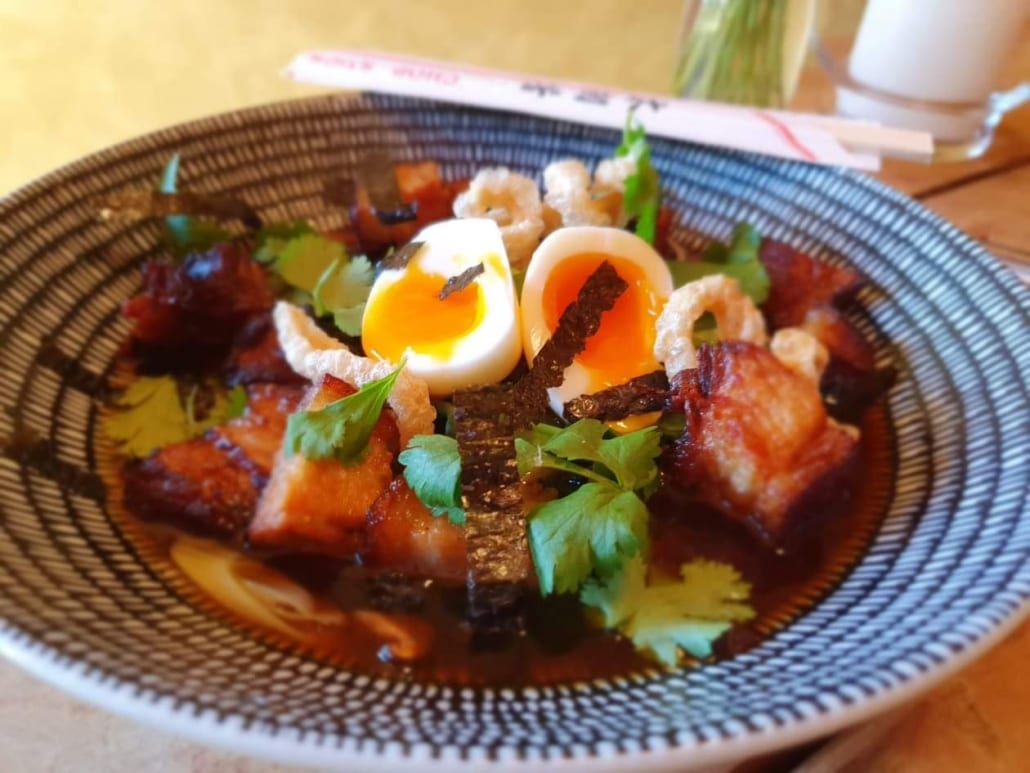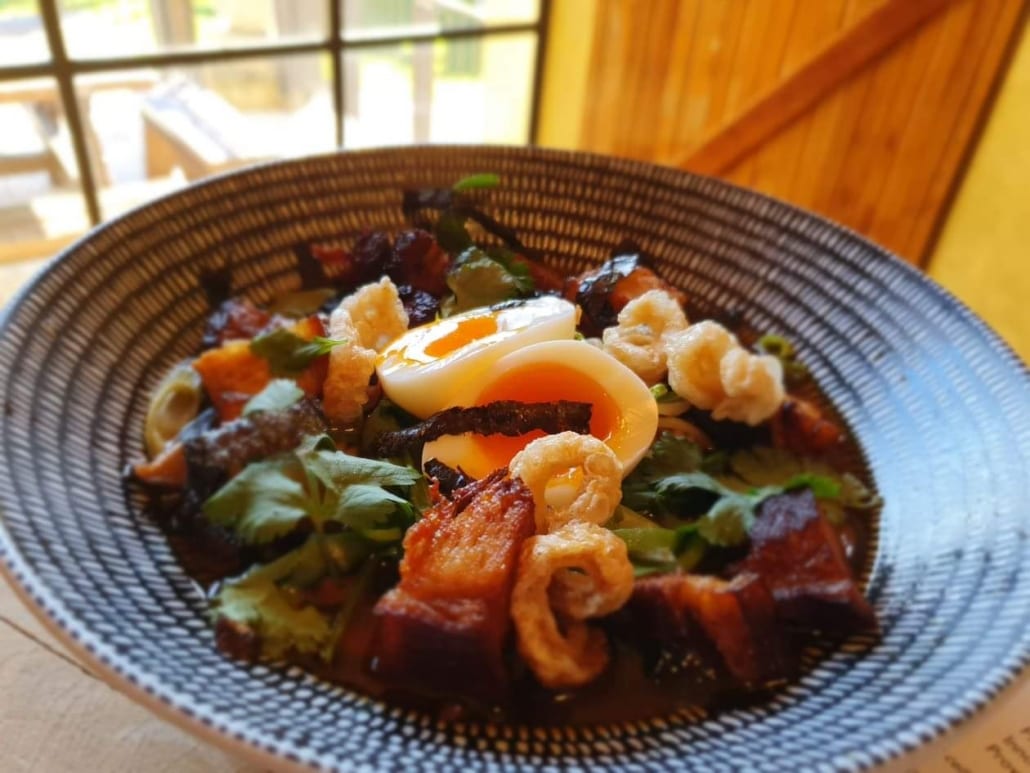
Ramen is a Japanese noodle dish consisting of wheat noodles served in a meat broth that has been flavoured with Miso or Soy sauce to give it a nice salty flavour. The meat broth is like a stock – vegetables, and a protein such as pork ribs are slowly simmered in water for a number of hours. This liquid is sieved, and the broth is seasoned with miso and mirin.
The Ramen noodles are cooked separately in a pot of boiling water, drained well (so as to not dilute the flavours in the broth) and added to the broth.
The dish is often topped with accompaniments such as soft- boiled eggs, wilted spinach, Shiitake mushrooms, Nori (dried seaweed), coriander and sliced braised or crispy Pork.
The Origin of Ramen….
Its origin is unknown, but many believe that Ramen came from China in the 1800s and offered a filling and affordable meal to the working class. It was originally made with rice noodles. After Japan was defeated by the Americans in WW2, the Americans occupied the country for close to a decade. In 1945, Japan recorded the worst rice harvest in history as production reduced and shifted to China and Taiwan. As a result, there were massive food shortages. In order to rectify this, the US saturated the market with cheap wheat flour, and consequently created a huge increase in bread consumption. It was also the beginning of Ramen noodles being made from wheat!
Many black market Ramen vendors were arrested during the occupation due to the ban on outdoor food vendors. However, by the 1950s, many of the imposed controls and restrictions were lifted, further increasing the number of ramen vendors.
Ramen today…..
Ramens’ popularity today comes as no surprise, as it is certainly taking the world by storm. With exciting umami flavours, and comfort food tendencies, we could call it a global phenomenon. While respecting the traditional process for making ramen used to be the order of the day, many chefs are now experimenting with their creative interpretations of the dish. But you can still find chefs today who masterfully create beautiful renditions of the original.
How do we eat Ramen the traditional way? Suck and Slurp!
Traditionally in Japan, it is important that before you take your first mouthful, you will savour the aroma and appreciate the presentation of the dish. After all, Ramen does take hours, and sometimes days, to prepare.
To further show your appreciation of the dish, suck up the noodles while making a “slurp!” sound. Don’t be afraid to make noises, because in Japanese tradition, it shows that you are really enjoying the dish.
How to enjoy our rendition of this deliciously warming dish…
‘Miso Ramen’ – Japanese soup with ramen noodles, crispy pork belly, soft boiled egg, shiitake mushrooms, nori and coriander

Visit us at Church Road Winery Restaurant. Click here to view our menu.

